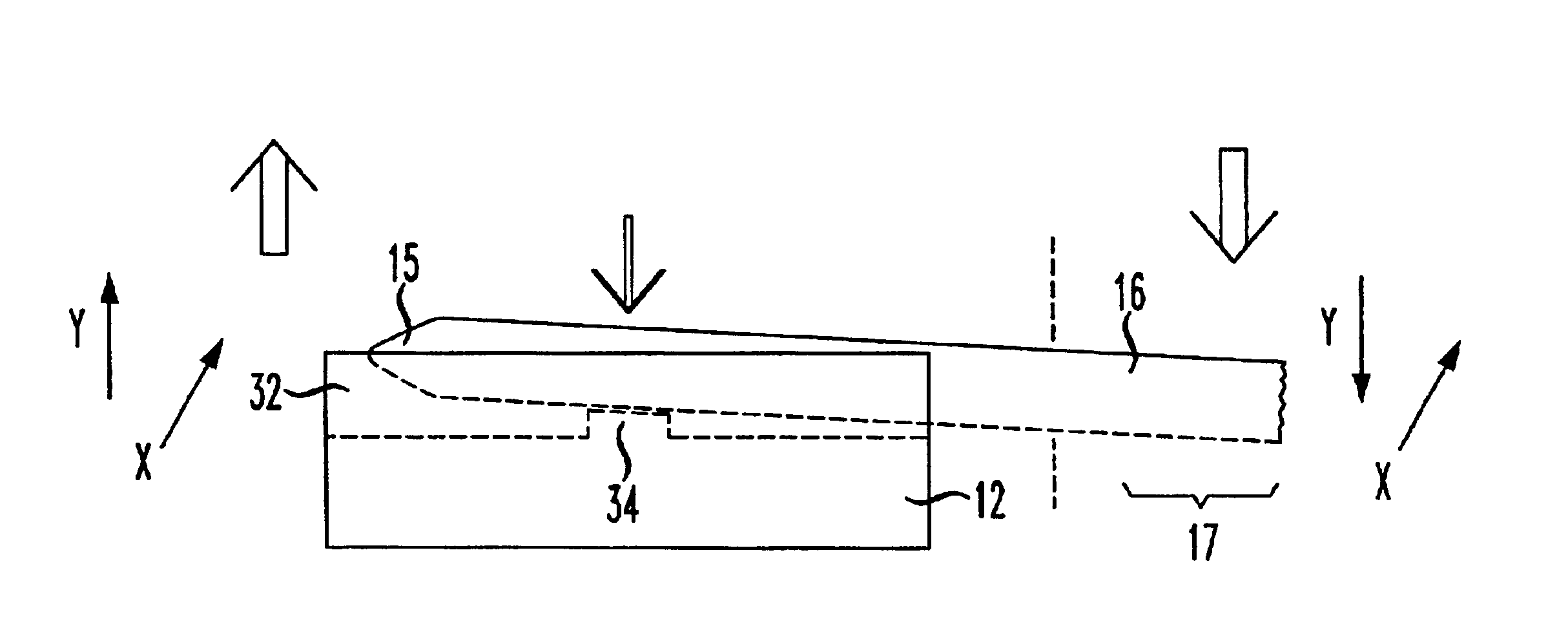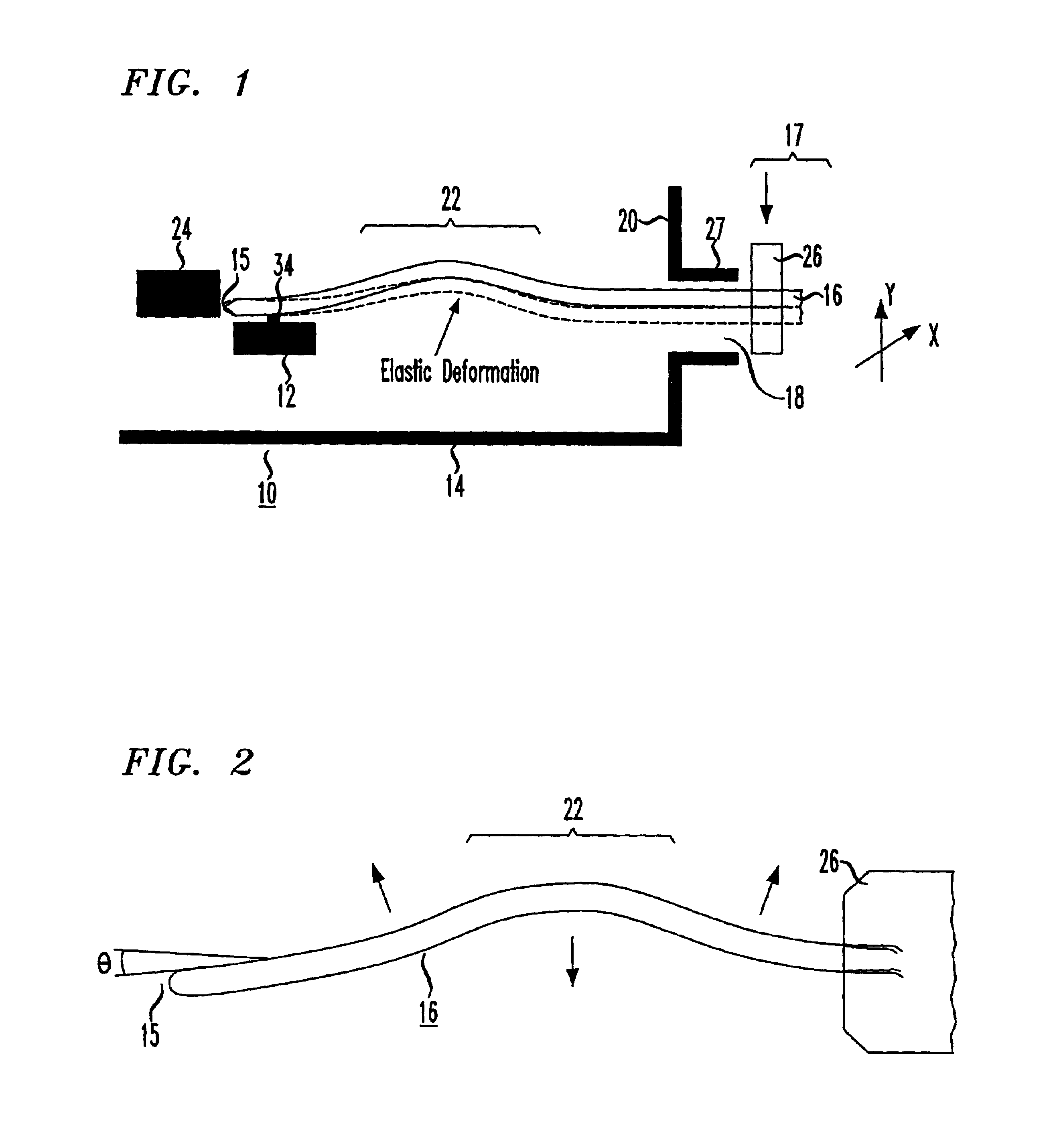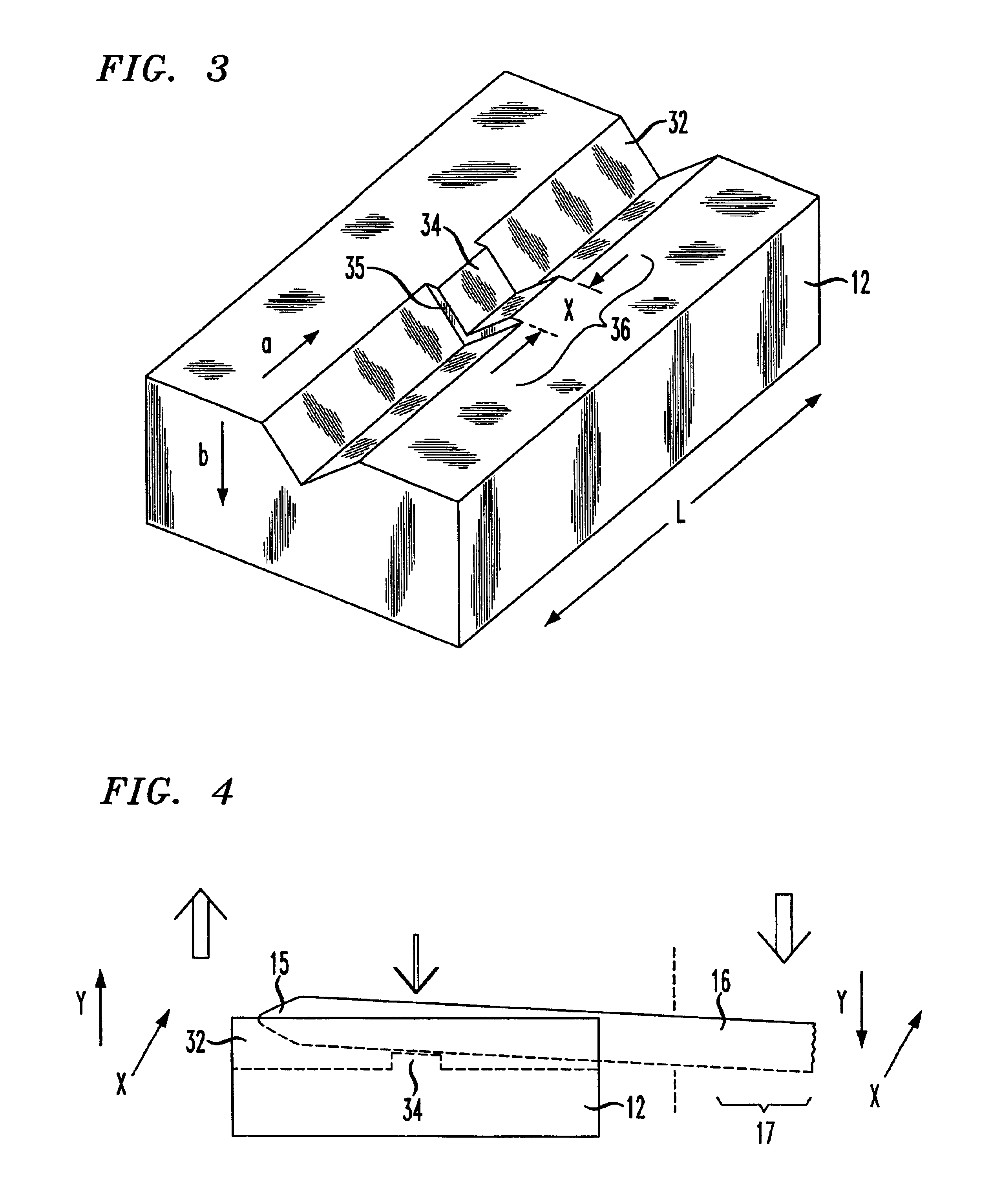Fiber alignment using a channel incorporating a fulcrum structure
a fiber support and channel technology, applied in the direction of optical waveguide light guide, instruments, optics, etc., can solve the problems of time-consuming and expensive high-volume production applications, significant cost saving in optical packaging, and inability to provide passive alignment with micron-level tolerances, etc., to achieve accurate and precise form a v-groove and reduce fatigue failure
- Summary
- Abstract
- Description
- Claims
- Application Information
AI Technical Summary
Benefits of technology
Problems solved by technology
Method used
Image
Examples
Embodiment Construction
is a side view of an exemplary fulcrum V-groove substrate and coverplate subsequent to attaching the fiber to the alignment element;
[0020]FIG. 6 is a cut-away view of the arrangement of FIG. 5, taken along line 6—6;
[0021]FIG. 7 illustrates an exemplary embodiment of the present invention including a pair of fulcrum V-grooves formed on a single substrate; and
[0022]FIG. 8 illustrates an array embodiment of the present invention.
DETAILED DESCRIPTION
[0023]FIG. 1 illustrates an exemplary optical package 10 that includes and utilizes a fulcrum fiber alignment element 12 formed in accordance with the present invention. In general, optical package 10 comprises a housing 14 formed of a material such as Kovar, where an optical communication fiber 16 is inserted through an opening 18 in a sidewall 20 of package 10. In accordance with the present invention, and as will be discussed in detail below, communication fiber 16 may include a lensed endface 15 (see FIGS. 2 and 4), and advantageously is...
PUM
 Login to View More
Login to View More Abstract
Description
Claims
Application Information
 Login to View More
Login to View More - R&D
- Intellectual Property
- Life Sciences
- Materials
- Tech Scout
- Unparalleled Data Quality
- Higher Quality Content
- 60% Fewer Hallucinations
Browse by: Latest US Patents, China's latest patents, Technical Efficacy Thesaurus, Application Domain, Technology Topic, Popular Technical Reports.
© 2025 PatSnap. All rights reserved.Legal|Privacy policy|Modern Slavery Act Transparency Statement|Sitemap|About US| Contact US: help@patsnap.com



